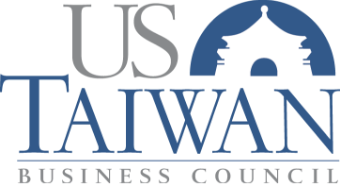Editorial:
America’s Dangerous Drift on Taiwan:
Trump seems to understand that U.S. neglect of Taiwan has emboldened China
(Arlington, Virginia, December 4, 2016)
Editorial by Rupert Hammond-Chambers – The Wall Street Journal
President-elect Trump’s phone conversation Friday with Taiwan’s democratically elected leader is the kind of engagement that any new U.S. president should undertake as he prepares to take office. In talking with President Tsai Ing-wen, Mr. Trump demonstrated why his presidency has the potential to return badly needed credibility to a host of global challenges where the Obama Doctrine has left vacuums, rising tensions and conflict.
America’s relationship with Taiwan is a good example of the drift in U.S. interests. The Obama administration likes to declare that we are experiencing the “best relationship ever.” But this assessment is predicated on an expectation that neither the U.S. nor Taiwan has ambitions for their relationship. Both have been far too preoccupied with their ties with China—a focus that has emboldened Beijing and fostered instability in the Taiwan Strait.
As a result, a dangerous vacuum has opened up in the U.S. relationship with Taiwan. The administration has all but halted arms sales to Taiwan even though such sales are guaranteed under U.S. law and have long been a mainstay of U.S. security relations with the island. So, too, the trade relationship has faltered. Our trade ties are better suited to those between the U.S. and Malta than with our ninth-largest trading partner. Trade ties drift aimlessly in the absence of broader goals such as investment and tax agreements or a bilateral free-trade accord.
Meanwhile, the Chinese have been pressing their objective: the unification and occupation of Taiwan through peaceful or military means. Beijing pursues economic integration and its smothering embrace, while its military modernization focuses on invading and occupying Taiwan. It points nearly 2,000 cruise and ballistic missiles at Taiwan’s people.
The U.S. has failed to meet this challenge, and it is into this vacuum that Ms. Tsai was elected in January. China’s response to her election has been to pressure Taiwan’s remaining allies, cut off direct communications with Taipei, and damage commerce by restricting mainland Chinese tourism to the island. It has also undermined Taiwan’s efforts to broaden its engagement with the global health community and to integrate better into the world’s global aerospace and transportation organizations.
Tensions have risen between Taiwan and China as a function of Beijing’s belligerence, and the Obama administration has done next to nothing in response.
It is a point of deep frustration in both Taiwan and the U.S. that China can pursue hostile activity in the South China Sea, regularly violate the sovereign airspace of Japan and Taiwan, and steal American commercial and military technology, putting companies out of business and threatening American forces with new Chinese capabilities created out of U.S. technology. It is China’s actions that destabilize Asia—and Mr. Trump appears to understand that.
Many in the U.S. presume that China would willingly hurt its own interests in a range of areas in pursuit of gains on Taiwan. This is a deeply flawed argument. Beijing will continue to act in its own core interests as they relate to North Korea, Iran, climate change and many other issues. On Taiwan matters, the U.S. likes to negotiate with itself in a vain attempt to ward off “China’s anger.” Unilaterally curbing military support to Taiwan and turning a blind eye to Chinese provocations after democratic elections in Taiwan are but two examples.
Mr. Trump made a bold statement of support by talking with Ms. Tsai. Instead of throwing another Trump tantrum, America’s media might consider encouraging Chinese President Xi Jinping to follow Mr. Trump’s example and have his own phone conversation with her. Who knows? It might actually reduce tensions in the Taiwan Strait.
